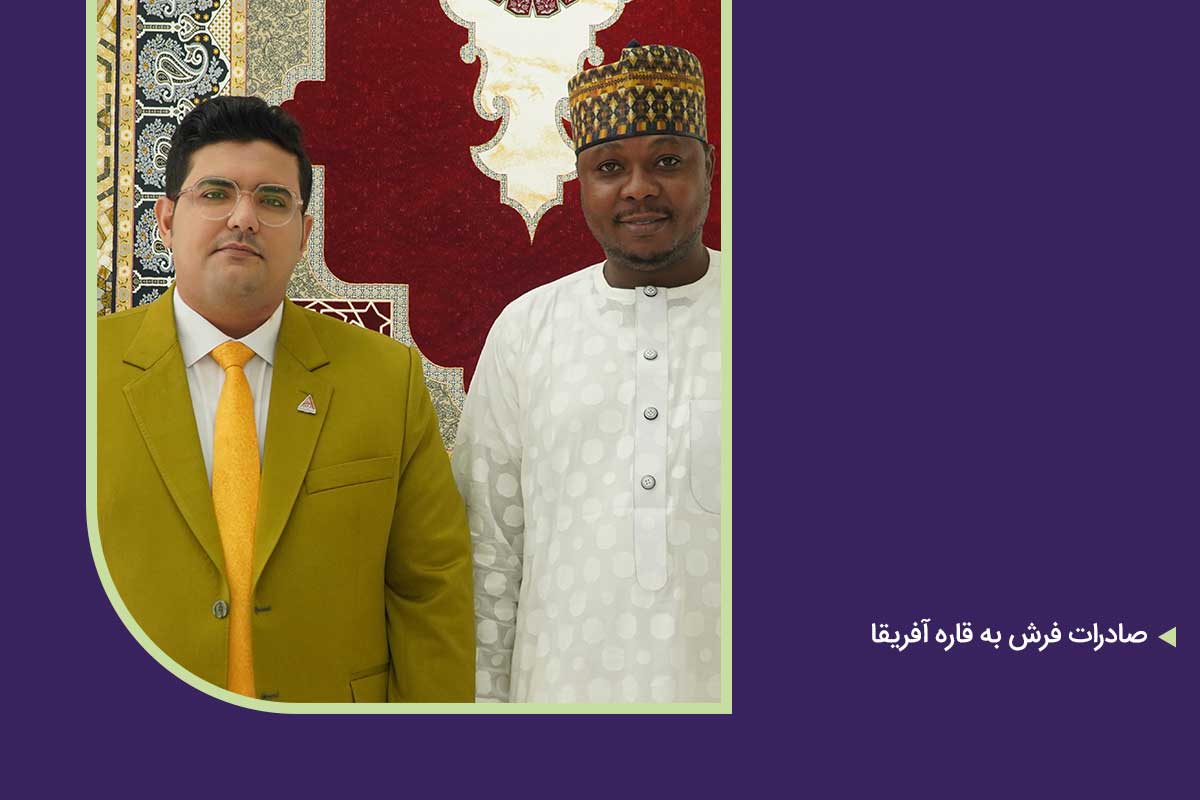Customs statistics and the best methods of exporting machine-made carpets have attracted a lot of attention in recent years, and carpet exports have been able to gain a special place in the world for Iran. In this series of issues of the magazine, we intend to get acquainted with the position of Iranian carpet exports in the world and all the news and statistics related to carpet exports. For more information, join us in the old magazine.
?Why do we export machine-made carpets
After many years, Iranian carpets have reached a position that is known in most parts of the world. This knowledge of carpets led the global market to a wide demand for machine-made and handmade carpets. If, above all, the question for you is, why do we export? It should be said that carpet exports these days, despite all the tensions and records that have occurred in it, still play a part in the development and cycle of the Iranian economy.
This means that you can easily sell your product in global markets and find your customers, and you can even count on these customers as regular carpet export customers.
Until almost a quarter of a century ago, Iranian carpets were considered a capital good in various countries. This means that, like the dollar and gold, its price fluctuated according to global market fluctuations. After going through a long process throughout these 25 years, the carpet changed from a capital good to a consumer good. Iran was ranked second in the world market for machine-made carpets after India, but was at the top of the world in terms of quality and beauty.
Export carpets
In the export of carpets, only handmade carpets have not been the target of Iran’s export cycle. Carpets, rugs and even carpets have their place of sale. Maybe in Iran and domestic markets, we differentiate between carpet and rug, but basically it is a type of flooring that has always been in demand and is considered as a sale of carpets.
Best practices and exports
The United States moved to China and India by imposing export sanctions instead of buying in the Iranian markets, and this caused the carpet export market to fluctuate for a while. Iran also turned to European markets in order not to lose its position, and is still one of the toughest competitors for China and India in the carpet market.
If you leave the task of exporting carpets to a skilled and trusted person, this process will accelerate. The good advantage of the carpet trade is that due to the popularity of Iranian carpets, it can be easily sold in the market and find customers.
Marketing
In the first stage, you have to go to marketing. Marketing is an important step that allows exporters to know foreign markets, know the core of power, competitors and most importantly, know the quality and consumption of goods.
The main ways to get information about marketing and exporting carpets
- Negotiate with buyers
- Access to official statistics and data
- Check previous records
- Participate in international exhibitions
Get a license
In this part of carpet export, the necessary licenses are received from the Trade Development Organization of Iran.
Issuance of proforma
After researching the market and obtaining a license, it is necessary to issue a profama. Each proforma contains the following specifications:
- Seller name, address, telephone, fax and telex
- Buyer name and address
- Name and technical specifications of the product
- the amount of
- Individual value of goods – the total value of goods
- Terms of payment
- Preparation and packaging
- Preparation and packaging
- Preparation and packaging
- Preparation and packaging
The exporter is obliged to prepare the goods and according to the agreement made, observing all the required conditions and characteristics, to do the necessary packaging for each goods. Packaging should be appropriate for the type of goods, shipping and market conditions.
Issuance and invoice for obtaining a certificate of origin
The exporter must have the invoice for the sale of her machine-made carpet in accordance with the terms of Proforma, issued and approved by the Chamber of Commerce and Mining Industries.(feminine)
Signing a contract for transportation and insurance
In order to prevent and compensate for any possible damages that may occur during the transportation of carpets, both the exporter and the importer will enter into an insurance contract and will specify the responsibilities of each party.
Declaring goods to customs
The exporter, with the available documents, refers to the export of machine-made carpets, such as business cards, licenses, and customs, and prepares and completes the export declaration.
Send goods
After performing the necessary checks and matching the specifications and contents, the goods can be sent based on the type of shipping contract made with the buyer.
Receipt of goods
After checking the delivery of the goods, the shipping company checks and seals the declaration of the exported goods and then delivers it to the carpet exporter.
Regulations for exporting machine-made carpets
In addition to the licenses that are generally required for the export process, some goods include mandatory enforcement of the standard. In the list of export goods subject to this law, rows 202 (cream used in handmade woolen carpets) and rows 203 (types of machine-made carpets) are related to carpet export. According to the book of export and import regulations, the export of various types of carpets, rugs woven with synthetic fibers or a mixture of synthetic fibers is prohibited and will be prosecuted.
In addition, carpets woven with dyed yarns, substandard and those made of synthetic fibers will be prohibited. There are no restrictions on exporting machine-made carpets to Canada, and some of the tariff codes for sending carpets to countries such as Turkey and Pakistan will have preferential tariffs.
Packaging is an essential component of any export product that affects not only safety but also costs, communications and even product marketing. It can be said that the exporter is always responsible for the packaging of export goods and must ensure that this packaging can not be harmed in international travel, which is mentioned in this video.




